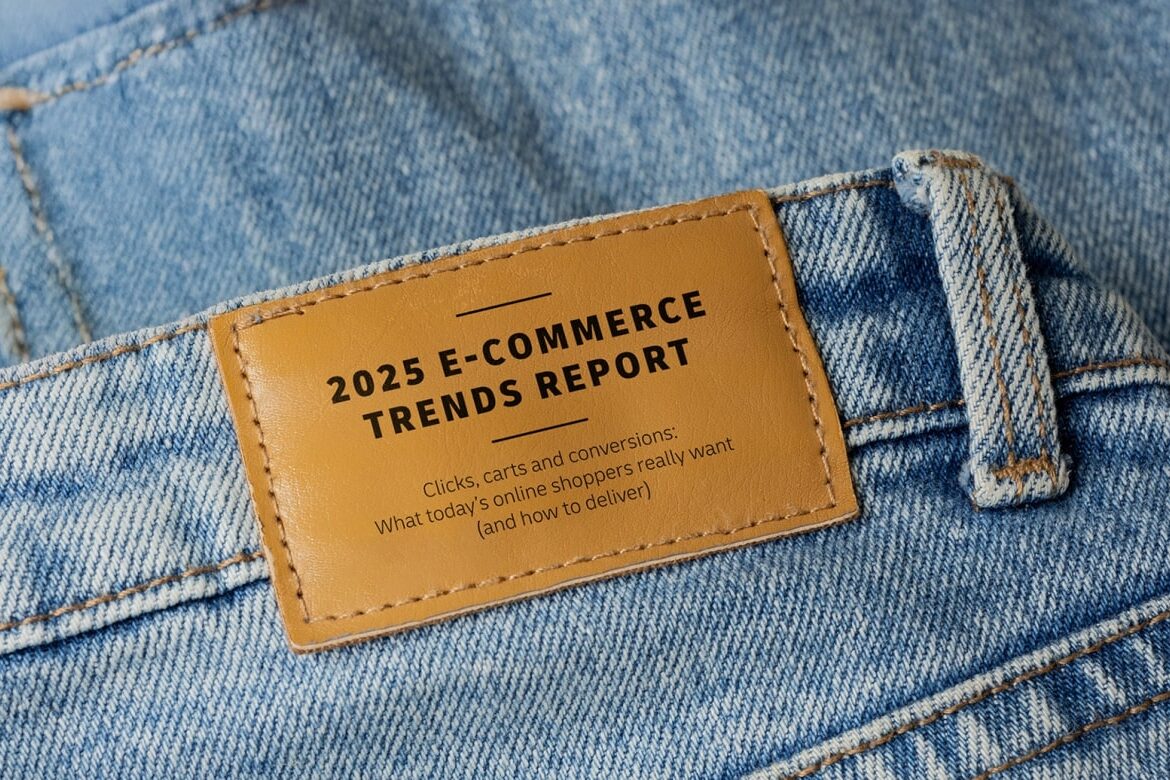The global e-commerce landscape is undergoing a seismic shift. Driven by technological advancements, evolving consumer behaviors, and rising expectations, online retail is entering a new era. DHL’s E-Commerce Trends Report 2025, based on insights from over 24,000 shoppers across 24 global markets, offers a detailed, data-backed roadmap for businesses aiming to stay ahead.
Image Source: www.dhl.com
The report identifies emerging trends in social commerce, AI-powered shopping, sustainability, and delivery logistics—all of which are redefining how brands attract, convert, and retain customers in 2025 and beyond.
Understanding the changing landscape of e-commerce
Today’s e-commerce consumers are diverse in demographics and expectations. From Gen Z’s mobile-first mindset to Baby Boomers’ trust-driven habits, the shopper base is fragmented yet unified by one common expectation: convenience. Successful online retailers must understand these multifaceted personas to deliver personalized, seamless experiences. The need for real-time insights into consumer preferences has never been greater.
DHL’s report reveals that while over 90% of shoppers use smartphones to browse and buy, only 50% make purchases weekly. This gap presents a tremendous opportunity for retailers to optimize every stage of the customer journey. Understanding key abandonment triggers and delight factors can be the difference between a completed purchase and a lost sale.
AI: The new standard in online shopping
Artificial Intelligence is no longer just an add-on feature—it’s now a baseline expectation. According to DHL’s research, 7 in 10 shoppers want AI-powered functionalities embedded in their shopping experience. From virtual try-ons to voice-enabled searches and AI-assisted product recommendations, these tools are shaping intuitive, responsive shopping journeys that convert better and foster loyalty.
Voice commerce, in particular, is gaining traction. Nearly half of social media shoppers already make purchases using voice commands, highlighting a growing preference for hands-free, conversational interactions. Retailers need to adapt their content for voice search and ensure their interfaces are user-friendly across all digital touchpoints.
Social commerce: Where scroll meets sale
Social platforms have evolved into powerful sales engines. Seventy percent of global consumers have made purchases through social media, and an equal percentage expect to use it as their primary shopping channel by 2030. Platforms like TikTok and Instagram are especially dominant among Gen Z, with 86% of Thai consumers and nearly half of Gen Z globally using TikTok to shop.
What drives this behavior? Viral trends, influencer endorsements, and the ability to shop within the app all contribute to social commerce’s success. DHL’s report shows that 82% of consumers are influenced by trending products. This means that brands must maintain an agile, content-driven strategy to meet their audiences in real time.
Delivery and returns: The ultimate conversion catalyst
Despite the tech-forward trends, the basic elements of logistics remain pivotal. The top reason for cart abandonment? Delivery that doesn’t meet expectations. DHL found that 81% of shoppers will abandon a purchase if their preferred delivery method isn’t offered, and 79% will do the same if returns are inconvenient.
Consumers crave flexibility: 64% of deliveries are now directed to homes, but out-of-home delivery is on the rise. Globally, there’s been a 25% increase in deliveries to lockers and shops. The shift is even more significant for returns—79% of Europeans and 66% globally prefer returning items to parcel lockers or shops. DHL’s extensive out-of-home network is positioned to meet this demand.
Providing real-time tracking, easy redirection, and paperless returns isn’t just a logistical perk—it’s a strategic imperative that directly affects trust and conversion.

The sustainability imperative
Sustainability has transcended trend status to become a core consumer expectation. Seventy-two percent of global shoppers consider sustainability when shopping online, and one in three have abandoned carts due to environmental concerns. Gen Z leads the movement, with nearly half citing sustainability as a deal-breaker.
From choosing pre-owned goods to participating in recycling programs, consumers are actively aligning purchases with their values. Over 50% of shoppers now buy refurbished products, and 58% would join retailer recycling or buy-back programs if available. Brands that transparently communicate their environmental practices and offer green delivery options are more likely to earn long-term customer loyalty.
Buy now, pay later and subscriptions: Flexibility fuels growth
Financial flexibility is reshaping e-commerce transactions. Buy now, pay later (BNPL) options are used by half of global shoppers, with 40% stating it encourages higher spending. This model is especially popular among Millennials and Gen Z, emphasizing the need for adaptable checkout experiences.
Meanwhile, subscription commerce continues its upward trajectory. One in three shoppers now subscribe for repeat deliveries, especially in sectors like electronics, fashion, and beauty. Subscription services drive retention by offering consistent value and convenience, reinforcing brand loyalty over time.
Reviews, trust, and the power of social proof
Trust remains a critical factor in online conversions. Nine out of ten shoppers say reviews influence their purchase decisions. Gen Z and Millennials place even more weight on visual content, with many favoring reviews that include photos or videos. Verified purchase badges, retailer responses, and detailed product descriptions further increase buyer confidence.
In this age of digital skepticism, authenticity wins. Brands that actively engage with reviews and prioritize transparency are more likely to earn trust and close sales.
Cross-border e-commerce: Global aspirations, local expectations
With the value of the global cross-border e-commerce market projected to hit $4.81 trillion by 2032, international shopping is on the rise. Three in five shoppers already buy from foreign retailers. While price and product availability are key drivers, trust, delivery reliability, and customs transparency remain crucial.
Shoppers are willing to look globally for better deals or unique products, but they expect the same level of service they would get locally. This includes local currency pricing, known logistics providers, and clarity on customs charges. Retailers aiming to expand their international footprint must localize experiences while maintaining high service standards.
Key findings from DHL’s E-Commerce Trends Report 2025
- 81% of shoppers abandon carts if preferred delivery option is unavailable.
- 79% abandon if their preferred return method isn’t offered.
- 70% expect to shop mainly via social media by 2030.
- 72% consider sustainability when purchasing online.
- 52% buy pre-owned or refurbished products.
- 58% are open to using recycling/buy-back programs.
- 50% of shoppers use Buy Now, Pay Later.
- 83% of Millennials shop using retailer apps.
- 91% of shoppers prefer smartphones for online shopping.
- 9 in 10 shoppers trust customer reviews when deciding what to buy.
These findings provide actionable insights for any business invested in growing their digital commerce footprint. They emphasize not only what consumers want but also how quickly those preferences are changing.
Final thoughts: Navigating the future of e-commerce
E-commerce in 2025 is dynamic, demanding, and full of opportunity. DHL’s comprehensive report outlines a clear path forward for retailers willing to adapt. Whether by integrating AI, optimizing for social commerce, offering flexible delivery and returns, or committing to sustainability, the blueprint for success is rooted in responsiveness.
As consumer expectations continue to evolve, so too must the tools, platforms, and strategies used to engage them. Retailers that embrace change, personalize experiences, and deliver reliably—literally and figuratively—will be best positioned to thrive.
To access the full DHL E-Commerce Trends Report 2025, visit dhl.com/e-commerce-report.
***




